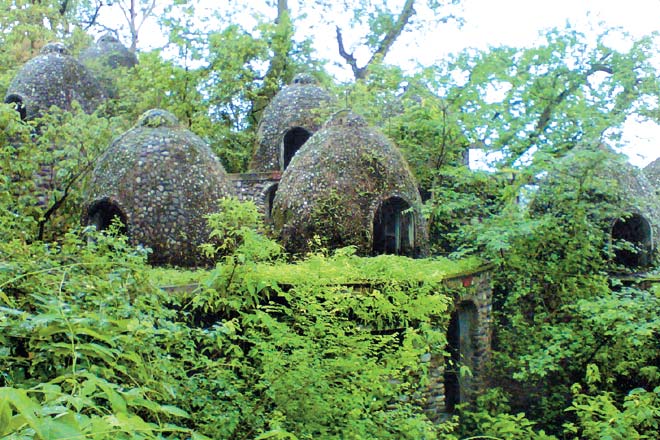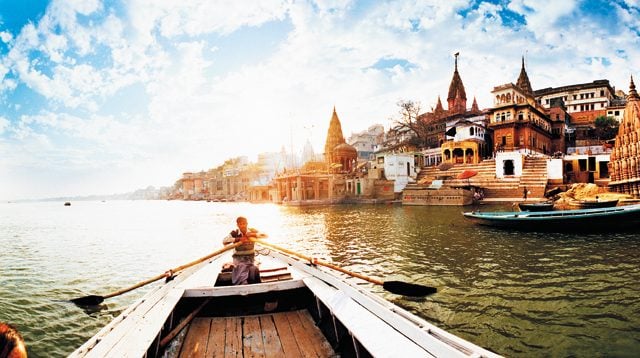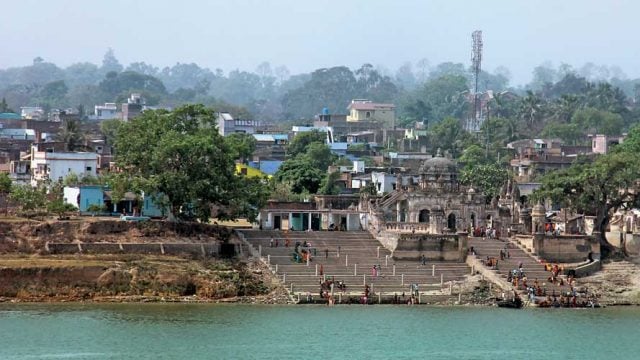It was a mesmerising setting — the mid-afternoon sun sneaking in through the forest foliage and
“Magic eggs.” Our guide pointed out, explaining that they were once used as meditation domes. “The acoustics inside the egg is extraordinary. If you stand inside the egg and keep chanting certain mantras for a sufficient period of time, your soul will leave your body.”
Rishikesh is situated in the foothills of the Himalaya where the Ganga tumbles down from the mountains onto the plains, flowing fresh and really fast. This location has attracted a steady stream of pilgrims for centuries, and as a result the town is dotted with innumerable ashrams, each offering its own customised version of spirituality.
But hardly anyone in Rishikesh today talks about Chaurasi Kutia (meaning 84 huts), the expansive, 15-hectare meditation centre of the late Maharishi Mahesh Yogi. This is somewhat ironic since the now-abandoned ashram, perched on a lonely cliff overlooking the river, was once the cynosure of all eyes — especially in 1968 when it hosted The Beatles, the veritable gods of rock who descended on the scene with their iconic long mane and marigold necklaces. And the world followed.
The Fab Four were looking to take a break from their tumultuous flower-powered career, and the ashram with its serene, soul-stirring surroundings and its earthen pathways winding through ancient trees, fragrant bushes, flowering vines and quaint meditation huts, provided just the right retreat. The group’s tenure at the ashram in Rishikesh turned out to be a watershed event in their career, for it was here that they practised TM (Transcendental Meditation) and wrote the songs that would fill such masterpieces as The White Album, Abbey Road and Let It Be.
Though Beatlemania was instrumental in putting Rishikesh on the global map of nirvana seekers, Maharishi’s ashram had to shut shop in 1981 following a Supreme Court order that forced him to return the leased land of the ashram to the government. Today the entire complex is part of the Rajaji National Park and officially closed to visitors. But this being India, many of the rules are as flexible as an acrobat’s back, and it is possible to gain entry into the dilapidated complex that is slowly succumbing to the forest’s fecund advances.
There are clusters of igloo-shaped meditation huts, the exteriors lined with perfectly arranged, shining and smooth stones taken from the riverbed. It is easy to imagine the place in its original avatar during the earlier happy hippie times — a well-built and self-contained little township replete with every western comfort, including air-conditioned meditation halls (quite something for an India of the 1960s) and its very own helipad.
“See this building?” The guide points to a hut with the number ‘9’ inscribed just above the door entrance and states that this was John Lennon’s room. Hearing him, I am reminded of the chanted words “number nine, number nine, number nine…” at the beginning of the avant-garde sound collage of ‘Revolution No. 9’ of The White Album. I wonder if the story is true.
We come to the expansive meditation hall, meticulously stripped of all accessories, even door-frames. The roof had caved in at places and it is clear in a few years, the space will be completely reclaimed by the forest. ‘Still my guitar gently weeps’, says a spray-painted graffiti on one of the walls. ‘Black Bird Fly’, reads another against a bright red backdrop. We clear some space amidst the cobwebs, and, facing the direction of the river, summon our loudest and longest OMs. Soon the sound reverberates off the walls and a succession of vibrations shakes our bodies, slowly seeping into our combined consciousness.
With time, many things in Rishikesh have undergone a sea change. But some, like the sadhus seated on the river bank chanting sonorous rhymes, sacred cows strolling on the streets and the faithful braving the icy waters in a bid to attain instant salvation, are still very much the same.
As I watched the sun set over the shimmering waters of the Ganga, it was clear that while The Beatles may have departed from the scene long ago, the essence of Indian spirituality that brought them here can still be experienced everywhere in Rishikesh.
The information
Getting there
From the Ram Jhula bridge (on the Parmarth Niketan side), walk along the river bank in the direction of the flow for about ten minutes till you reach the ashram entrance.
Ram Jhula bridge
Rishikesh
The Beatles
Leave a Reply
You must be logged in to post a comment.





